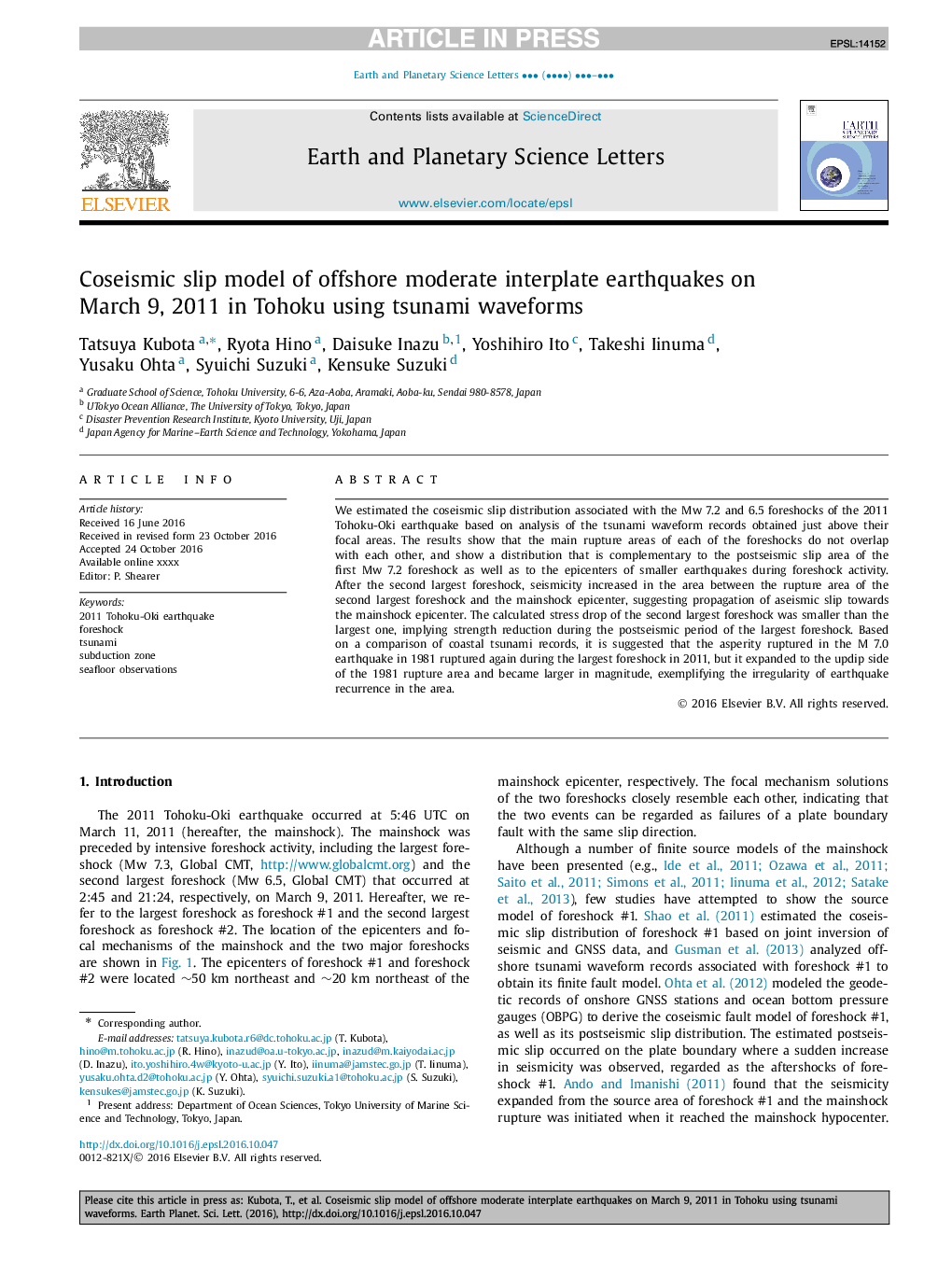| Article ID | Journal | Published Year | Pages | File Type |
|---|---|---|---|---|
| 5780019 | Earth and Planetary Science Letters | 2017 | 11 Pages |
Abstract
We estimated the coseismic slip distribution associated with the Mw 7.2 and 6.5 foreshocks of the 2011 Tohoku-Oki earthquake based on analysis of the tsunami waveform records obtained just above their focal areas. The results show that the main rupture areas of each of the foreshocks do not overlap with each other, and show a distribution that is complementary to the postseismic slip area of the first Mw 7.2 foreshock as well as to the epicenters of smaller earthquakes during foreshock activity. After the second largest foreshock, seismicity increased in the area between the rupture area of the second largest foreshock and the mainshock epicenter, suggesting propagation of aseismic slip towards the mainshock epicenter. The calculated stress drop of the second largest foreshock was smaller than the largest one, implying strength reduction during the postseismic period of the largest foreshock. Based on a comparison of coastal tsunami records, it is suggested that the asperity ruptured in the M 7.0 earthquake in 1981 ruptured again during the largest foreshock in 2011, but it expanded to the updip side of the 1981 rupture area and became larger in magnitude, exemplifying the irregularity of earthquake recurrence in the area.
Related Topics
Physical Sciences and Engineering
Earth and Planetary Sciences
Earth and Planetary Sciences (General)
Authors
Tatsuya Kubota, Ryota Hino, Daisuke Inazu, Yoshihiro Ito, Takeshi Iinuma, Yusaku Ohta, Syuichi Suzuki, Kensuke Suzuki,
